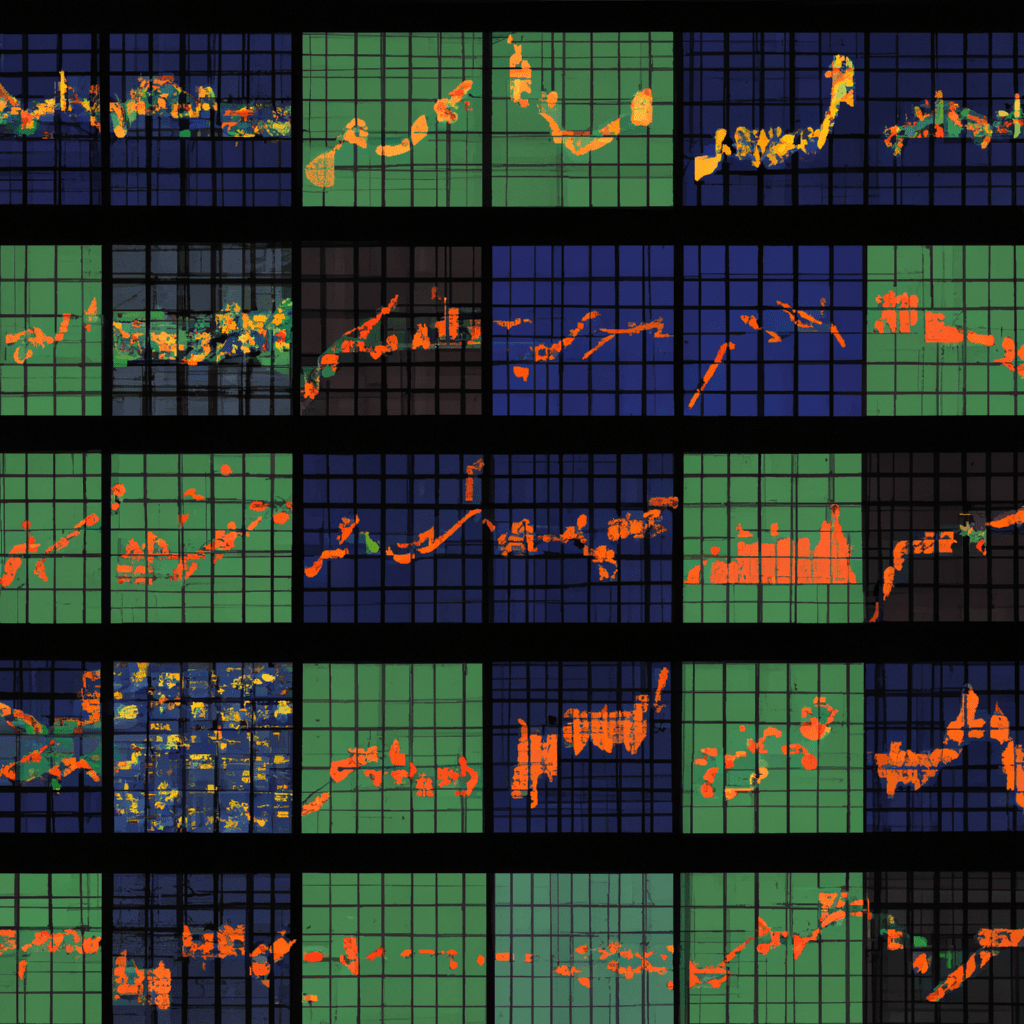This section explains the different types of forex signals, including technical analysis, fundamental analysis, sentiment analysis, combination signals, and manual/automated/copy trading/free/paid signals. It emphasizes the importance of choosing a service that aligns with one's trading style and preferences.
Forex trading, also known as foreign exchange trading, offers individuals the opportunity to profit from the fluctuations in currency exchange rates. However, navigating the complex world of forex trading can be overwhelming, especially for beginners. That's where forex signals come in. Forex signals are indicators or suggestions that help traders make informed decisions about when to buy or sell currencies. In this comprehensive guide, we will explore the different types of forex signals, the services that offer them, and the various trading strategies associated with each type. By understanding the different types of forex signals, traders can enhance their trading strategies and improve their chances of success in the forex market. So, let's dive into the world of forex signals and unlock the secrets to profitable trading.
1. Understanding the Different Types of Forex Signals: A Comprehensive Guide

Forex signals play a crucial role in the world of currency trading. They serve as indicators or triggers that help traders make informed decisions about when to enter or exit a trade. However, not all forex signals are created equal. Different types of signals cater to various trading strategies and goals. In this comprehensive guide, we will explore the various types of forex signals and their characteristics.
1. Technical Analysis Signals:
Technical analysis signals are the most common type of forex signals used by traders. These signals are based on the analysis of historical price data, charts, and mathematical indicators. Traders who rely on technical analysis signals believe that past price patterns and indicators can predict future market movements. Common technical indicators used in generating signals include moving averages, oscillators, and support/resistance levels. Technical analysis signals can be generated manually or automatically using specialized software or algorithms.
2. Fundamental Analysis Signals:
Fundamental analysis signals focus on factors that influence the forex market at a macroeconomic level. These signals are derived from the analysis of economic indicators, news releases, political events, and central bank decisions. Traders who utilize fundamental analysis signals believe that economic data and news events can impact currency valuations. For example, a positive employment report may strengthen a country's currency, while political instability may weaken it. Fundamental analysis signals require traders to stay updated with economic news and have a good understanding of how different factors affect currency markets.
3. Sentiment Analysis Signals:
Sentiment analysis signals are based on the collective sentiment or mood of traders towards a particular currency pair. These signals attempt to gauge whether traders are bullish (optimistic) or bearish (pessimistic) about a currency's future performance. Sentiment analysis signals are often derived from social media sentiment, surveys, or market sentiment indicators. Traders employing this type of signal believe that market sentiment can provide insights into potential market reversals or trends.
4. Combination Signals:
Combination signals, as the name suggests, combine multiple types of signals to generate a more comprehensive trading strategy. Traders who use combination signals believe that a holistic approach incorporating different perspectives can increase their chances of making profitable trades. For example, a trader may combine technical analysis signals with fundamental analysis signals to gain a better understanding of potential entry and exit points.
It is important to note that forex signals are not foolproof and should be used as a tool to support decision-making rather than relying solely on them. Traders should also consider their risk tolerance, trading style, and market conditions when utilizing forex signals. Experimenting with different types of signals and finding the ones that align with your trading goals and strategy is crucial for success in the forex market.
2. Exploring Forex Signal Services: Which Type is Right for You?

When it comes to choosing a forex signal service, it's important to understand the different types available and determine which one is right for you. The right forex signal service can greatly enhance your trading experience and increase your chances of making profitable trades. Here are some common types of forex signal services to consider:
1. Manual Signals:
Manual signals are generated by professional traders who analyze the market and send out trading recommendations to subscribers. These signals are based on their expertise and market knowledge. Subscribers usually receive signals through email, SMS, or a dedicated platform. Manual signals are suitable for traders who prefer a more hands-on approach and want to have control over their trades.
2. Automated Signals:
Automated signals are generated by computer algorithms or trading robots that analyze the market and execute trades automatically. These signals are based on preset criteria and trading strategies. Subscribers receive signals in real-time, and trades are executed automatically on their behalf. Automated signals are ideal for traders who want to take advantage of the market 24/7 without having to constantly monitor it.
3. Copy Trading Signals:
Copy trading signals allow traders to replicate the trades of successful traders. Subscribers can choose a trader whose strategy aligns with their goals and risk appetite, and their trades are automatically copied onto their own trading account. Copy trading signals are suitable for traders who want to benefit from the expertise of experienced traders without having to develop their own trading strategy.
4. Free Signals:
Some forex signal services offer free signals as a way to attract new subscribers. These signals are often limited in terms of frequency and features compared to paid services. Free signals can be a good starting point for beginner traders who want to test the waters before committing to a paid service.
5. Paid Signals:
Paid signals are provided by professional signal providers who charge a subscription fee. These signals are usually more comprehensive and reliable compared to free signals. Paid signals often come with additional features such as analysis, risk management tools, and customer support. Paid signals are recommended for traders who are serious about forex trading and want access to high-quality signals.
Ultimately, the type of forex signal service that is right for you depends on your trading style, experience level, and personal preferences. It's important to carefully evaluate the pros and cons of each type and choose a service that aligns with your goals and trading needs. Remember to consider factors such as signal accuracy, reputation of the provider, ease of use, and customer support when making your decision.
3. Decoding Forex Trading Strategies: Unveiling the Various Types of Forex Signals

Forex signals play a crucial role in the world of forex trading, as they provide traders with valuable insights and information about potential trading opportunities. These signals are essentially trading recommendations generated by experienced professionals or automated systems, which can be used by traders to make informed decisions in the market.
When it comes to forex signals, there are several different types available, each with its own unique characteristics and advantages. Understanding the various types of forex signals is essential for traders who wish to maximize their chances of success in the forex market. Let's delve into some of the most common types of forex signals:
1. Technical Analysis Signals:
Technical analysis signals are generated based on the analysis of historical price data, chart patterns, and various technical indicators. Traders who rely on technical analysis believe that historical price movements repeat themselves, and by analyzing these patterns, they can predict future price movements. Technical analysis signals often include buy/sell recommendations, price targets, and stop-loss levels.
2. Fundamental Analysis Signals:
Fundamental analysis signals rely on macroeconomic data, news events, and market sentiment to predict the future direction of currency pairs. Traders who use fundamental analysis signals closely monitor economic indicators, such as interest rates, inflation rates, employment data, and geopolitical events, to identify trading opportunities. These signals often provide insights into the potential impact of economic news on currency pairs.
3. Sentiment Analysis Signals:
Sentiment analysis signals focus on market sentiment and investor behavior to predict potential market movements. These signals take into account factors such as market positioning, investor sentiment surveys, and social media sentiment analysis. By gauging the overall sentiment of traders, sentiment analysis signals aim to identify possible shifts in market direction.
4. Copy Trading Signals:
Copy trading signals are generated by successful traders who allow other traders to automatically copy their trades. This type of signal is particularly popular among novice traders or those who wish to save time and effort in analyzing the market themselves. Copy trading signals provide an opportunity to replicate the trading strategies of experienced traders, allowing users to benefit from their expertise and potentially generate profits.
5. Automated Signals:
Automated signals are generated by computer algorithms that analyze vast amounts of data and execute trades based on predefined trading strategies. These signals can be based on technical indicators, mathematical models, or a combination of both. Automated signals are popular among traders who prefer a systematic and emotion-free approach to trading.
In conclusion, understanding the various types of forex signals is vital for traders looking to make informed decisions in the forex market. Whether it be technical analysis, fundamental analysis, sentiment analysis, copy trading, or automated signals, each type offers unique insights and advantages. It is important for traders to choose the type of signal that aligns with their trading style, risk tolerance, and overall trading objectives.
In conclusion, understanding the different types of forex signals is crucial for any trader looking to navigate the complex world of foreign exchange. As discussed in this comprehensive guide, there are various types of signals that traders can utilize, each with its own advantages and drawbacks. Whether you choose to rely on automated signals, manual signals, or a combination of both, it is important to consider your trading goals, risk tolerance, and level of expertise. Additionally, exploring different forex signal services and decoding various trading strategies can further enhance your understanding and decision-making in this dynamic market. By staying informed and adapting your approach to the ever-changing forex landscape, you can increase your chances of success and achieve your financial goals.





